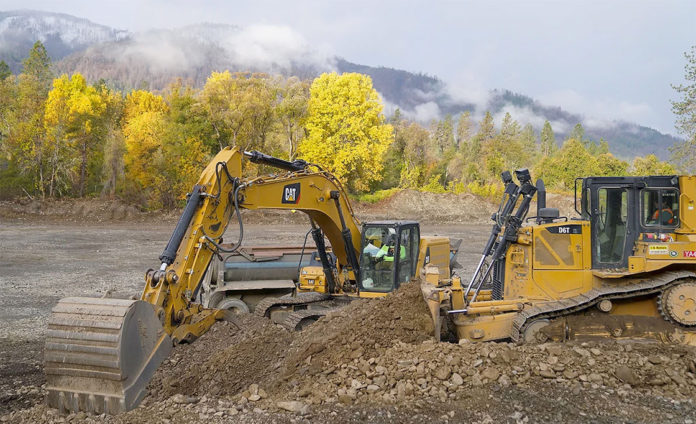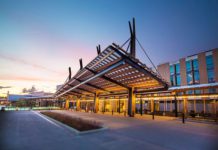
KLAMATH, CA – The Yurok Tribe recently received a $3,990,587 grant from the California Department of Fish and Wildlife for a large-scale river restoration project on the Trinity River.
“These funds will help us transform a severely damaged section of the Trinity into diverse, dynamic and complex habitat for salmon and steelhead,” said Frankie Myers, the Yurok Tribe’s Vice Chairman and President of the Yurok Tribe Construction Corporation. “I sincerely thank California Governor Newsom and the California Department of Fish and Wildlife for investing in our effort to rebuild these invaluable fish stocks and make the Klamath Basin more resilient to climate change. These funds could not have come at a better time.”
The Trinity River is the largest Klamath River tributary. The salmon and steelhead spawning stream plays a major role in the Klamath Basin’s fish production and contributes much to the overall health of the interconnected watershed. Dams, widespread habitat degradation and water diversions have reduced the Trinity’s salmon and steelhead runs to a small fraction of their former sizes. The Yurok Tribe is engaged in collaborative, complementary efforts to restore habitat, improve water management and rebuild fish stocks on the Klamath and Trinity Rivers. The California Department of Fish and Wildlife grant is funding a significant portion of the Oregon Gulch Project, which is the largest fish habitat construction initiative in the Trinity River’s history.
“We are extremely grateful for the Newsom administration’s considerable investment in the Oregon Gulch project on the Trinity River,” said Yurok Chairman Joseph L. James. “This project is part of our long-term plan to recover our fish runs and preserve an essential part of our culture.”
The Yurok Fisheries Department’s multidisciplinary team of restoration biologists, engineers and hydrologists, along with geomorphologists, wetland ecologists and botanists, designed the Oregon Gulch Project. The Yurok Tribe Construction Corporation is leading the implementation of the monumental rewilding initiative. Funded by the California Department of Fish and Wildlife, Trinity River Restoration Program and U.S. Department of the Interior, the Yurok Tribe Construction Corporation-led Oregon Gulch Project aims to accomplish the following goals:
- Restore complex floodplain habitat and natural river processes for the benefit of salmon and steelhead
- Increase habitat diversity for all riparian species (fish, frogs, turtles, birds, insects, etc.) year-round within an approximately one-mile river segment
- Remove for than 500,000 cubic yards of mine tailing and restore 32 acres of degraded floodplain, wetland and riparian habitat for fish and wildlife
- Increase juvenile salmon and steelhead habitat by up to 1,000 percent within the project reach
- Increase groundwater retention and restore riparian corridor
- Establish conditions for the river to access its valley, allowing the channel to evolve as well as create new fish habitat for many years to come
For most of the last century, the Oregon Gulch floodplain, located near Junction City, has been buried in more than 35 feet of gold mine tailings comprised of bowling ball-sized rocks, gravel and silt. The construction team will remove the dredge mining refuse and reshape the straight river channel into a sweeping arc or meander bend with large-wood elements, deep holes and wetlands. Over time, the approximately one-mile-long river segment is expected to evolve into a complex network of channels spanning a verdant floodplain within the 35-acre valley.
“Salmon and steelhead numbers will gradually improve on the Trinity and Klamath Rivers after the four dams are removed,” said Barry McCovey Jr., Yurok Fisheries Department Director. “I am confident that we can rebuild salmon stocks through dam removal, habitat restoration, and proper water management, to a level that would support tribal, ocean commercial and recreational fisheries.”
The heavy equipment work on the Oregon Gulch Project will wrap up this fall. After the machines move out, a crew will establish a wide variety of well-adapted plants, including native grasses/forbs, shrubs and trees, at key locations within the project site. The vegetation will further improve habitat for salmon and steelhead as well as many different native wildlife species.
While increasing salmon and steelhead production is the primary goal of the Oregon Gulch Project, the restoration of the immense riparian corridor will benefit other culturally important fish species, such as Pacific lamprey and threatened coho salmon. The restored river valley will also aid a myriad of native amphibians, birds and mammals, due to the abundance of food, water and shelter.















































